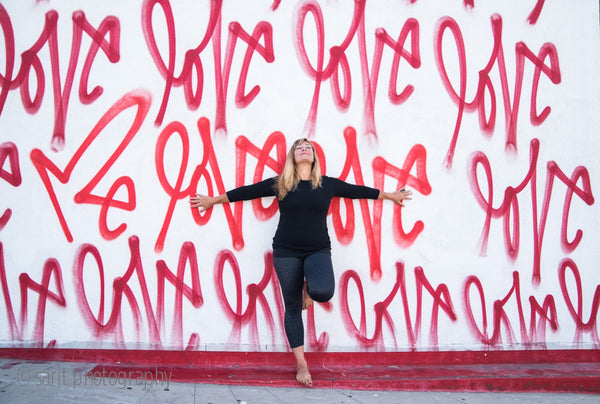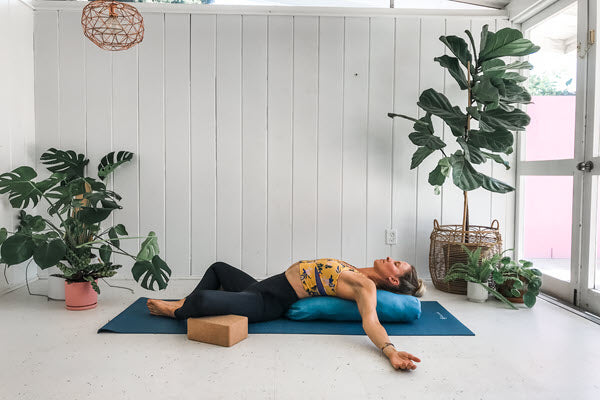How Does Sunlight Impact Your Mood?

Authors: Shelagh Braley & Kate Clark
Natural sunlight is a free and available mood enhancer. It encourages us to produce vitamin D and protects us from seasonal mood changes. However, because society is more aware than ever of skin cancer and sun damage, most of us have significantly reduced our exposure to natural sunlight.
But, in doing so, we have traded the risk factors of one disease for others. Lack of natural sunlight can lead to vitamin D deficiency - which contributes to an increased risk of and Seasonal Affective Disorder (SAD).
Causes of Seasonal Affective Disorder
Although the exact causes of SAD are still unknown, studies have shown that the unique chemical makeup of each person, age and genetics all play roles in whether lack of natural sunlight triggers a seasonal affective response. Any decline in natural sunlight exposure and the resulting vitamin D absorption disrupts the natural body clock that controls the body's gauge for sleeping and waking hours.
This causes an uncontrolled deviation from normal patterns and behaviors, which in turn can causes feelings of depression and hopelessness. Reduced melatonin and serotonin hormones — the chemicals released from the brain that control mood — are often also partly to blame for SAD symptoms that lead to depression.
Risk factors for SAD
Some people have proved more susceptible to Seasonal Affective Disorder. Those with higher risk factors include women, those who live farthest from the equator (Eskimos, for example) and those whose family histories include members who have suffered from seasonal affective issues.
As with other types of mental disorders and depression, this disorder should be taken seriously. If it reaches the critical stage of feelings of isolation, coupled with severe hopelessness and, perhaps, suicidal thoughts, consult your doctor immediately.
Treatments for lack of natural sunlight
Most parts of the world have three low-sunlight seasons, and the only way to absorb enough sunlight during these times is to get into natural sunlight to keep serotonin and melatonin levels from sinking. Your skin and eyes should catch sunlight for 10 to 15 minutes a day, even early in the morning when the sun is not yet strong. Do not look directly into the sun, but glance peripherally at it for just a few seconds at a time.
When natural sunlight hits the skin, it triggers the body to produce vitamin D. Vitamin D is present in very few foods, but is necessary for proper calcium absorption. Sufficient calcium levels in the body prevent teeth and bone erosion, including osteoporosis. Most importantly, research has shown that sufficient levels of vitamin D control mood and feelings of satisfaction, especially in those with risk factors for SAD. Since vitamin D works in concert with calcium to support strong bone health and hormone regulation, taking supplements to replace lost vitamin D as well as melatonin might help to temporarily minimize the effects of a lack of natural sunlight and improve your mood.
Seasonal Affective Disorder has successfully been treated with light therapy, during which the sufferer is exposed to specially designed lights. They can be set up in the home or office, and have been shown to be effective in treating symptoms of SAD.
Remember to talk to your doctor if you show signs of SAD, especially during the winter months.
Aromatherapy recipes for depression
Another way to combat the depressive symptoms of SAD relies on herbs. Using aromatherapy for depression is a natural way to combat negative thoughts and promote relaxation. Many essential oils have calming or energizing properties that can benefit your mind. While not medically proven to cure the condition of depression, aromatherapy can be part of a holistic approach to mental wellness. Mixing up a few simple recipes can help elevate your spirits.
Common Essential Oils in Aromatherapy Recipes for Depression
On her website, AromaWeb, Wendy Robbins, who holds an American College of Healthcare Sciences Certificate in Aromatherapy, recommends essential oils for depression, along with several recipes:
- Bergamot (uplifting, soothing)
- Clary Sage (euphoric, relaxing)
- Frankincense (calming)
- Grapefruit (awakening, motivating)
- Jasmine (comforting, uplifting)
- Lavender (balancing, relaxing)
- Lemon (revitalizing, cleansing)
- Neroli (peaceful, soothing)
- Orange (calming, uplifting)
- Rose (calming, uplifting)
- Sandalwood (comforting, relaxing)
- Ylang Ylang (balancing, uplifting)
Mixing and storing aromatherapy blends
Aromatherapy recipes involve mixing drops of essential oils with a carrier oil, such as almond, olive or jojoba. To reap the most benefits, store your blends in dark-colored glass bottles in a cool place away from the light.
Sandalwood/rose/orange aromatherapy diffuser oil for depression
- In a glass bottle, combine 12 drops of sandalwood oil, four drops of rose oil and four drops of orange oil.
- Gently roll the bottle to mix.
- Place drops of the mixture in an aromatherapy diffuser to fill your room with the scent.
Lavender/rose/bergamot aromatherapy massage oil for depression
- Combine one ounce of jojoba oil with three ounces of almond oil.
- Add 20 ounces of lavender oil, 10 drops of rose oil and 10 drops of bergamot oil.
- Mix well.
Clary sage/bergamot aromatherapy bath salts for depression
- Add eight drops of clary sage oil and 12 drops of bergamot oil to three cups of sea salt.
- Mix well in a bowl, adding one tablespoon of a carrier oil for moisture.
- Store in a jar with a snug lid.
Experiment with your own blends
Try other combinations of aromatherapy oils for depression. Other possible blends include ylang-ylang-lavender-grapefruit and lemon-frankincense-jasmine.
Also in Blog

Body Peace & Personal Empowerment

Yoga for Swimmers: Poses for Strength and Mobility

